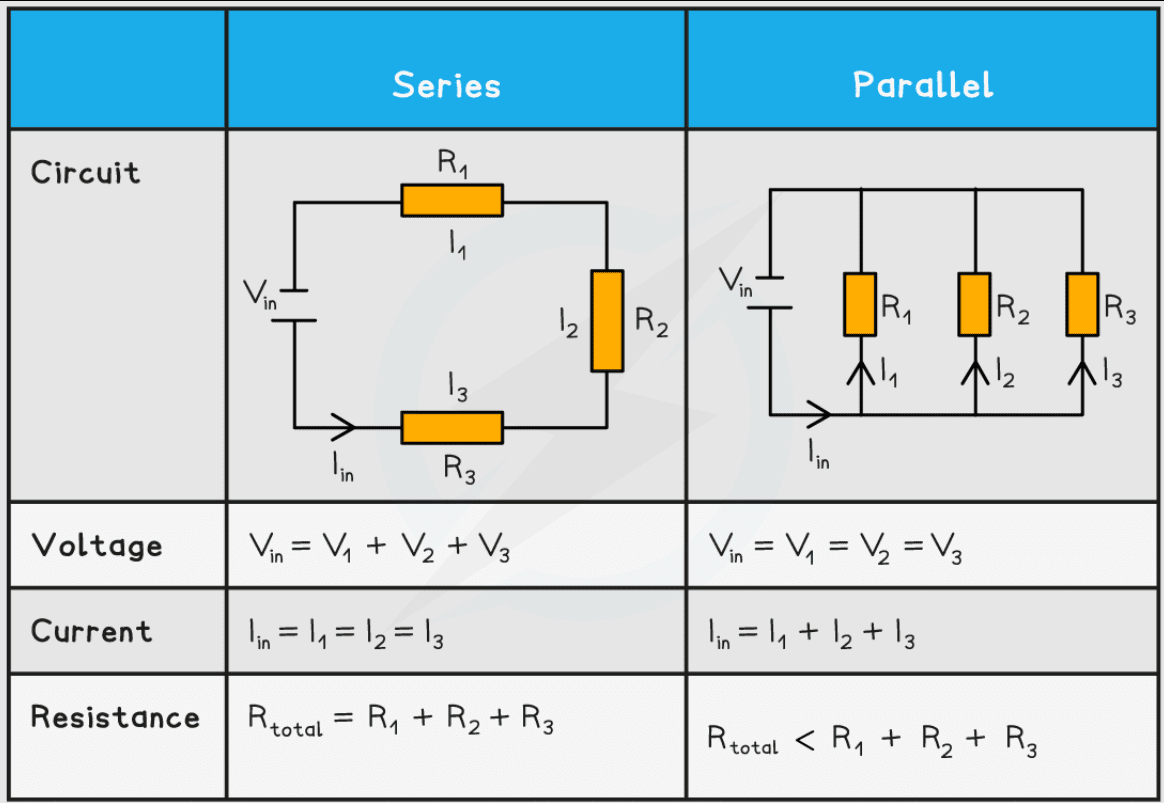Lights, Circuits, Action. A Hands-On Journey Through Ohm’s Law
Electricity Experiment For Class 10
Curiosity Questions
-
Why do some electrical appliances consume more power than others even if they seem to work the same way?
-
Have you ever wondered how the fuse in your home protects your appliances?
-
Why does the brightness of a bulb change when connected in series versus parallel?
STEM Challenge Introduction
In this challenge, you’ll explore how electricity flows through different circuit configurations and how this affects resistance, voltage, current, and power consumption. You’ll verify Ohm’s Law (V = IR) using real circuits, measure how resistance adds in series and parallel, and observe how different household bulbs and appliances consume power. You’ll also learn how fuses and Miniature Circuit Breakers (MCBs) protect homes from electric hazards. This hands-on exploration will help you better understand the electric systems around you and how engineers design safe circuits for homes.
Materials Required
-
Battery or DC power supply (6V or 12V).
-
Voltmeter (or multimeter).
-
Ammeter (or multimeter).
-
Resistors (10Ω, 20Ω, 50Ω) or simple resistive loads (e.g., iron nails or pencil leads).
-
Electrical wires with crocodile clips.
-
Bulbs of different wattages (e.g., 10W, 40W, 60W).
-
Bulb holders or sockets.
-
Breadboard or circuit board (optional).
-
Switch.
-
Household appliance (e.g., electric fan or LED light).
-
Fuse wire (e.g., 1A or 5A rating) or a sample fuse.
-
MCB (optional sample piece for observation).
Eco-friendly/household alternatives: Use pencil leads as resistors, recycled wire from unused chargers, and old bulbs from non-functional electronics.
Safety Precautions
-
Always handle electrical components with dry hands.
-
Ensure the voltage and current used are safe and low (preferably under 12V).
-
If using household appliances, involve an adult for supervision.
-
Do not use damaged wires or sockets.
-
Disconnect power before assembling or modifying circuits.
Step-by-Step Process
Verifying Ohm’s Law
-
Connect a simple circuit: battery, resistor, switch, voltmeter in parallel to the resistor, and ammeter in series.
-
Close the switch and note the voltmeter and ammeter readings.
-
Vary the resistance and record different V and I values.
-
Plot V vs. I and observe if it forms a straight line.
Series and Parallel Resistance
-
Connect two resistors in series, measure the total resistance using voltmeter and ammeter, and calculate using R=V/I
-
Connect the same resistors in parallel, repeat the measurements and calculations.
-
Compare results with theoretical values:
-
Series: Rtotal=R1+R2
-
Parallel: 1/Rtotal=1/R1+1/R2
-
Power Consumption
-
Connect different bulbs one at a time to the power supply with a voltmeter and ammeter.
-
Measure voltage and current for each bulb.
-
Calculate power using P=VI
-
Compare which bulb consumes more power and why.
Understanding Fuse and MCB
-
Observe a fuse wire and MCB closely.
-
Discuss their construction and purpose.
-
Optional: Create a demo setup with a low-rated fuse and show how it breaks when excess current flows (under adult supervision only).
Expected Outcome
-
Learners will observe that voltage and current are directly proportional, confirming Ohm’s Law.
-
Resistance increases in series and decreases in parallel.
-
Higher wattage bulbs draw more current and consume more power.
-
Fuses break the circuit when current exceeds the rated value; MCBs do the same but are reusable.
Observation
-
What happens to current when resistance increases in your circuit?
-
Which bulb consumed the most power and why?
-
How does the fuse wire behave when too much current flows?
STEM Concepts Behind It
-
Science: Ohm’s Law, electric current, resistance, power.
-
Technology: Understanding how household circuits function and how devices like fuses/MCBs prevent hazards.
-
Engineering: Designing circuits to handle safe loads.
-
Mathematics: Calculating resistance, current, voltage, and power using formulas.
Concept Elaboration
This experiment links theoretical electrical principles to practical circuit design. Engineers must calculate expected current and resistance in various appliance setups to prevent overloads. Using series and parallel configurations strategically helps balance loads across circuits. Fuses and MCBs are real-life implementations of controlling circuit behavior under excessive current to prevent damage or fire.
Real-Life Applications
-
Domestic wiring uses parallel circuits to ensure all appliances get the same voltage.
-
Fuses protect expensive electronics like TVs and refrigerators.
-
Engineers use Ohm’s Law to design safe and efficient circuits for homes, industries, and electric vehicles.
-
MCBs are standard in modern homes for automatic circuit protection without needing replacement like traditional fuses.
Your STEM Challenge
Design your own miniature model of a household electric circuit with bulbs in rooms and switches. Add a fuse mechanism using thin wire to protect your circuit. Can you estimate how much current your circuit will draw? Use your observations to explain if your fuse selection is appropriate.
Think Further & Explore More
-
Why is parallel wiring preferred in homes over series wiring?
-
How do smart circuit breakers in modern homes detect faults?
-
Can you explore how electricity is distributed from power plants to homes?
-
Try building a circuit that includes a dimmer switch how does it change current and brightness?
Read Here – Metals and Non Metals Experiment For Class 10
Watch Video – How to Make TinkerCAD Circuits Video


